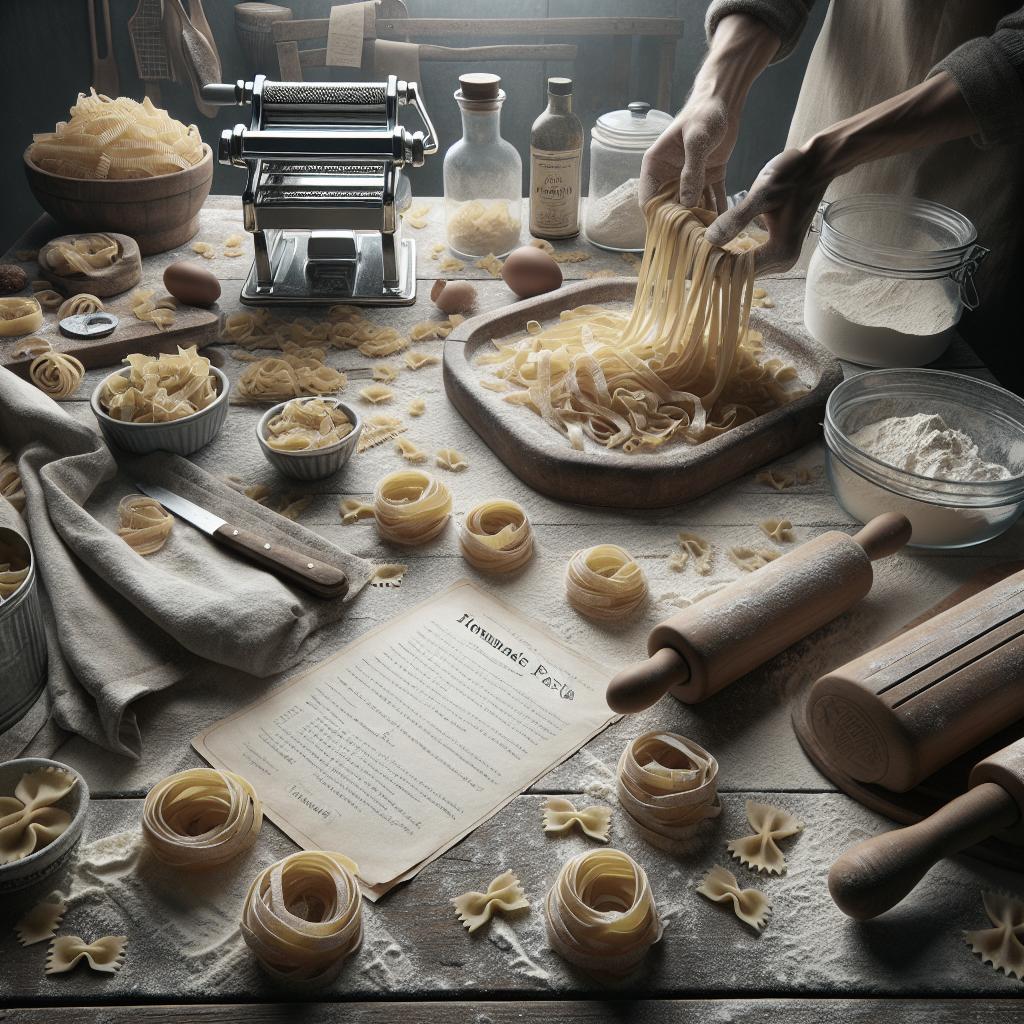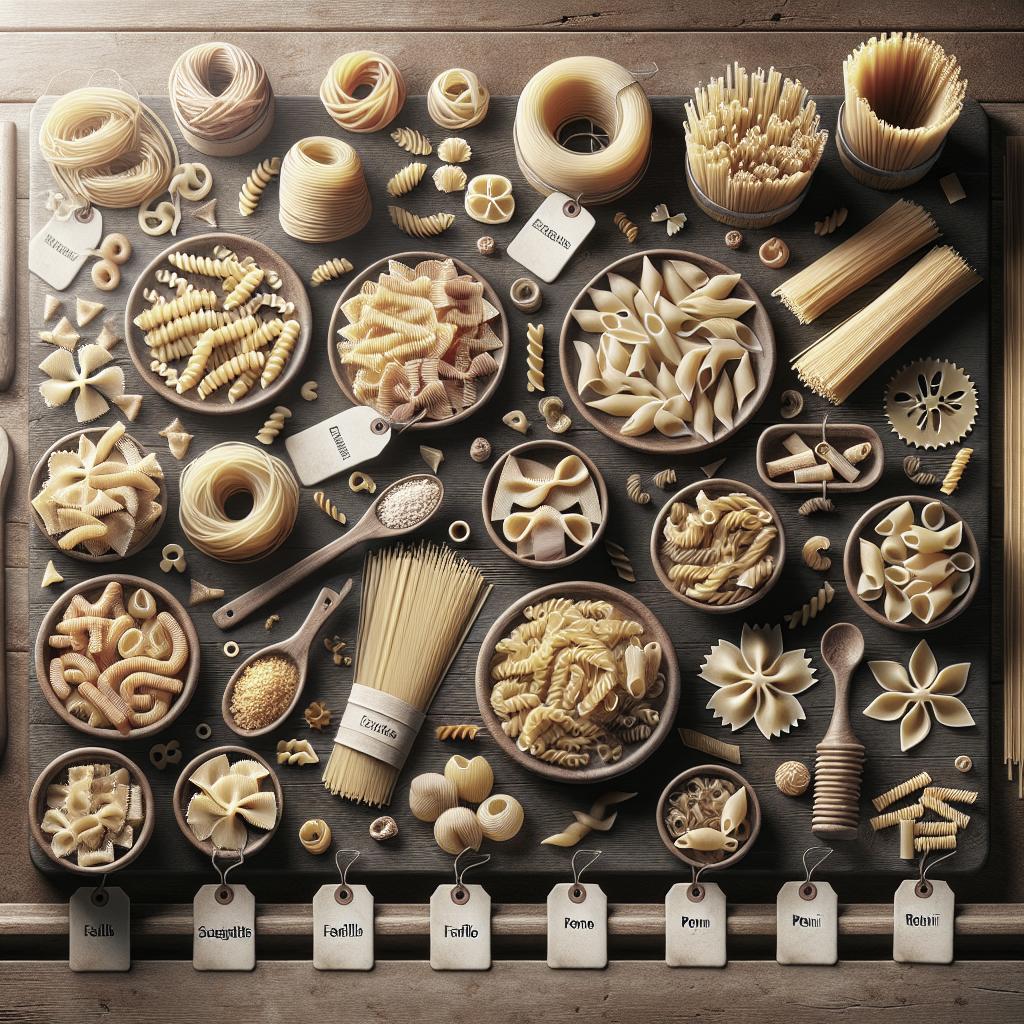“`html
How to Store Homemade Pasta
Homemade pasta is a delightful culinary venture that can elevate any meal. However, once prepared, knowing how to store it properly is crucial to maintaining its flavor and texture. In this guide, we’ll explore different storage methods for homemade pasta, including room temperature, refrigeration, and freezing, as well as specific tips for storing stuffed pasta. We’ll also discuss when to choose between storing in the fridge versus the freezer, and how to ensure your pasta maintains the quality you expect. Whether you’re preparing it for a quick meal or planning to store it for future use, knowing the best preservation methods is essential. Finally, we address common questions and provide useful tips to ensure your pasta storage is effective and efficient.
Why I Don’t Recommend Drying Pasta At Home
Drying pasta at home might seem like a practical approach to storing homemade pasta, yet it often falls short of maintaining quality and safety. Industrial drying processes are carefully controlled to ensure the right texture and food safety, aspects that are challenging to replicate at home. Home environments can introduce moisture and contaminants that affect the dried pasta’s taste and longevity.
Additionally, without the proper equipment and conditions, dried pasta can become brittle or uneven, leading to a compromised cooking experience. If your goal is to explore drying pasta, it might be worth investing in a dedicated pasta drying rack or machine that can help control the drying process more efficiently.
Room Temperature
Tips
Storing pasta at room temperature is convenient for short-term needs but requires some precautions. To keep pasta fresh for immediate cooking, it is best to use it within a few hours after making it. Place freshly made pasta on a floured surface to prevent sticking, and cover with a clean kitchen towel to protect it from drying out and absorbing odors from the environment.
Avoid leaving pasta out for extended periods, as this increases the risk of bacterial growth, especially in warm and humid conditions. It’s crucial to gauge room conditions and ensure any pasta left out is in a dry environment. A quick move into refrigeration after the initial drying period can help maintain its quality.
Fridge
Tips
The fridge is an ideal place for storing homemade pasta for a few days. First, lightly toss your pasta in a small amount of flour to keep it from clumping together. Then, place the pasta in an airtight container or a resealable plastic bag, removing as much air as possible to maintain freshness.
Be mindful that while refrigeration slows bacterial growth, it doesn’t stop it entirely. Homemade pasta should ideally be cooked within 2-3 days while stored in the fridge to ensure its optimal taste and texture. Label the container with the date to track freshness and prevent staying past its prime storage timeline.
Freezer
Freezing is the best method for long-term pasta storage. Ensure pasta is floured well to prevent sticking and spread it in a single layer on a baking sheet to freeze initially. Once frozen, transfer it to a freezer-safe bag or container, ensuring minimal air presence by using vacuum packing if possible.
This method preserves pasta’s freshness for up to 2 months, allowing you to prepare large batches in advance without worrying about spoilage. When you’re ready to cook, you don’t need to thaw; simply add the frozen pasta straight to boiling water and extend the cooking time by a minute or two.
Freezing Stuffed Pasta
Stuffed pastas, such as ravioli and tortellini, require careful preparation before freezing to maintain their integrity. Ensure that the stuffed pasta is dusted with flour and laid out on a baking sheet before freezing. This step helps each piece maintain its shape and prevents sticking.
It’s often beneficial to freeze stuffed pasta individually before combining them in a storage bag. Storage time can extend up to 3 months for best quality. As with regular pasta, cooking from frozen is possible by adjusting cooking times slightly to ensure even cooking throughout the filling.
Fridge vs. Freezer
Deciding whether to use the fridge or freezer depends largely on how soon you plan to use your pasta. For short-term use, refrigeration is sufficient and slightly more convenient. However, if cooking plans are beyond a week or unexpected changes occur, freezing ensures that the pasta remains in top condition.
While freezing offers extended shelf life, it’s important to store pasta properly to prevent freezer burn. Moreover, the refrigerator is ideal for other pasta types, such as fresh egg pasta, where quick preparation is important for retaining delicate flavors and textures.
Cooking
Cooking stored pasta requires slight adjustments to ensure desired results. Fresh pasta from the fridge should be directly cooked in boiling water but requires less cooking time compared to dried pasta. On the other hand, frozen pasta needs additional cooking time – access to boiling water directly reduces thawing time and enhances texture.
Always taste test pasta during the final stages of cooking to adjust the texture to your preference. Keep in mind that each storage method alters moisture content slightly, so cooking times will vary based on your chosen storage and pasta type.
FAQs
Can homemade pasta go bad? Yes, without proper storage, homemade pasta can spoil. Always store pasta in appropriate conditions for the timeline you anticipate using it.
Is it okay to freeze cooked pasta? Yes, but it’s recommended to undercook the pasta slightly before freezing. This avoids a mushy texture once reheated.
References
For further reading and in-depth culinary techniques on pasta storage and more, consider exploring resources such as “The Food Lab” by J. Kenji López-Alt or pasta cookbooks by renowned chefs like Marcella Hazan.
Next steps
| Storage Method | Duration | Best Practices |
|---|---|---|
| Room Temperature | A few hours | Use flour; cover with towel |
| Fridge | 2-3 days | Use airtight containers; date labeling |
| Freezer | Up to 2 months | Single layer freezing, vacuum sealing |
| Freezing Stuffed Pasta | Up to 3 months | Individually freeze pieces |
“`


